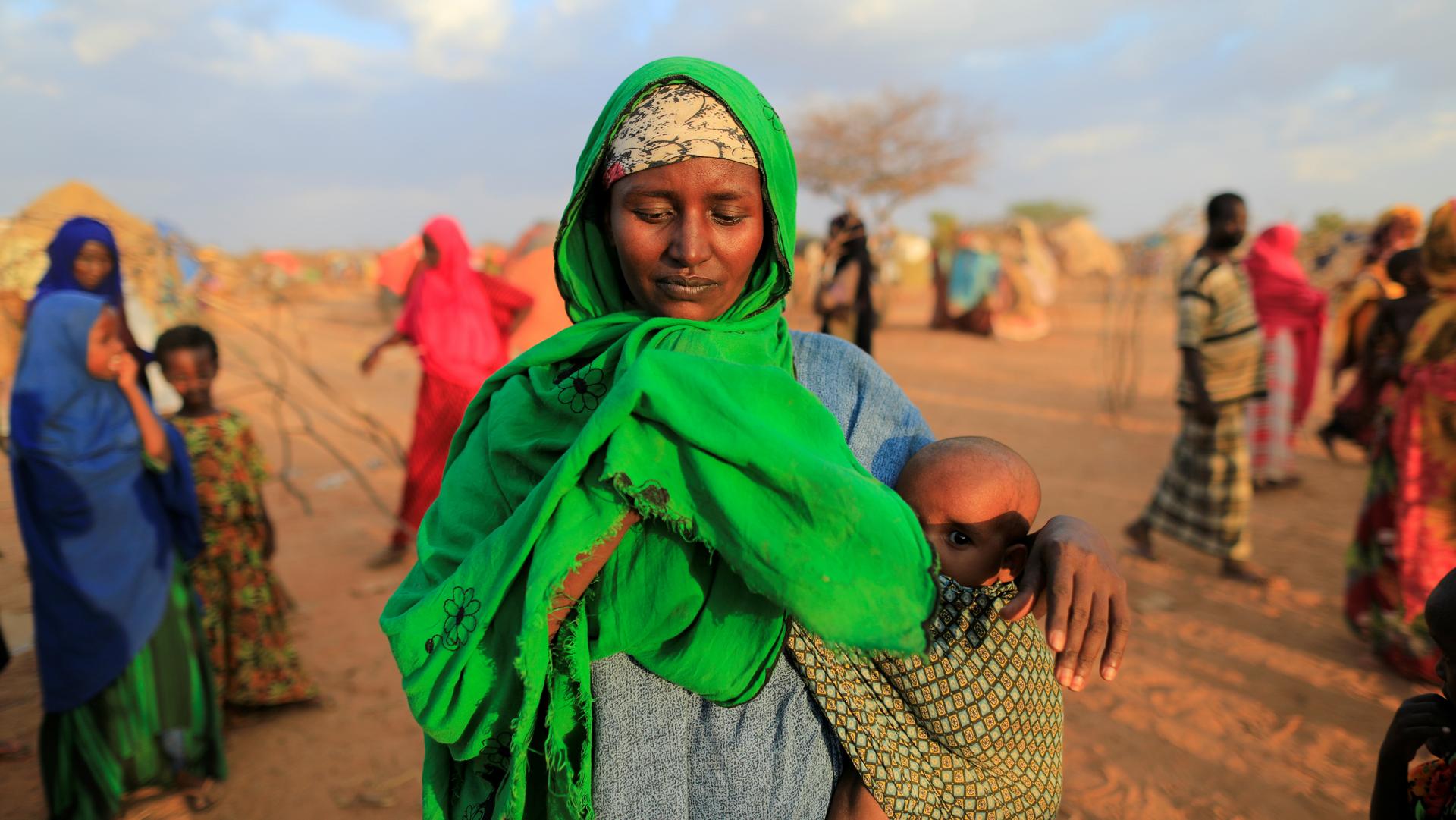Somalis walk for days searching for food and water while al-Shabab blocks aid
An internally displaced woman from drought-hit area at a makeshift settlement area in Dolow, Somalia, April 4, 2017.
After a long search for food, 12-year-old Abubakar took a break recently under a dry mango tree to escape the scorching sun in the southern Gedo region of Somalia, near the Kenyan border.
“I was looking for anything to eat,” he said. “I hadn’t eaten anything for the past few days. We had been eating in school but now there’s no food. I have been forced to leave school and look for food.”
Abubakar is among the 3 million Somali children who have quit school to escape starvation brought on by an unforgiving drought and exacerbated by ongoing conflict between the government and al-Shabab militants, according to the United Nations. Around 100,000 are on the brink of leaving their studies.
Abubakar recently walked almost 50 miles along the Kenyan border from the Somali town of El Wak to Dolow, near Ethiopia, in search of food and water, he said.
“I want to go to Mogadishu,” he said, not knowing that his country’s capital was 350 miles away. “I have heard that there’s food and good life in the city. I want to go there and also feel good.”
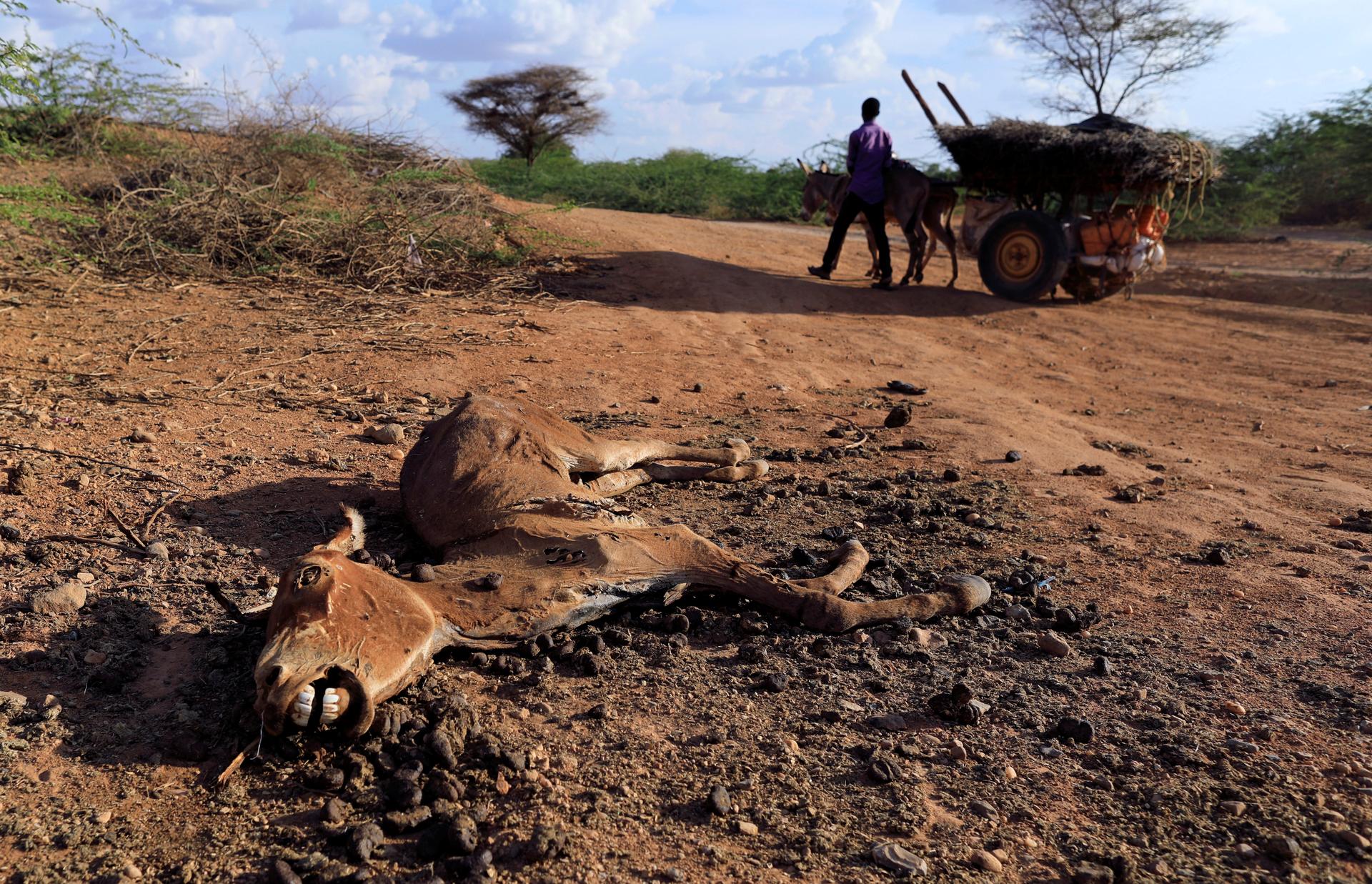
Somali President Mohamed Abdullahi Mohamed last month declared a state of disaster due to the severe drought that aid agencies said has left 6.2 million people, more than half Somalia’s population, in crisis. About 3 million are going hungry and face death from starvation, the UN said.
Recently in southern Somalia, 110 people died in a single day from famine and diarrhea, the Somali government reported. Hot winds blow across a vast, barren land littered with animal carcasses. Water prices have spiked. A water tanker truck now costs about $250 — an enormous price for impoverished, thirsty Somalis.
“I can’t go to school because am hungry. I will walk until I get to a place where food is distributed.”
When children and their parents find water in the bush, it's often contaminated.
Some parents have abandoned their children to search for food and water. They often feel more pressure because they must also tend to livestock that provide for their families in ordinary times.
“Children are bearing the brunt of ongoing drought in Somalia,” said Adan Sheikh, a teacher at El Wak Primary School. “We have no children right now to teach at our schools. Most of them have dropped out of school because of a lack of food. Some are dying because they have been abandoned by their parents in search for food. The future of these children remains uncertain.”
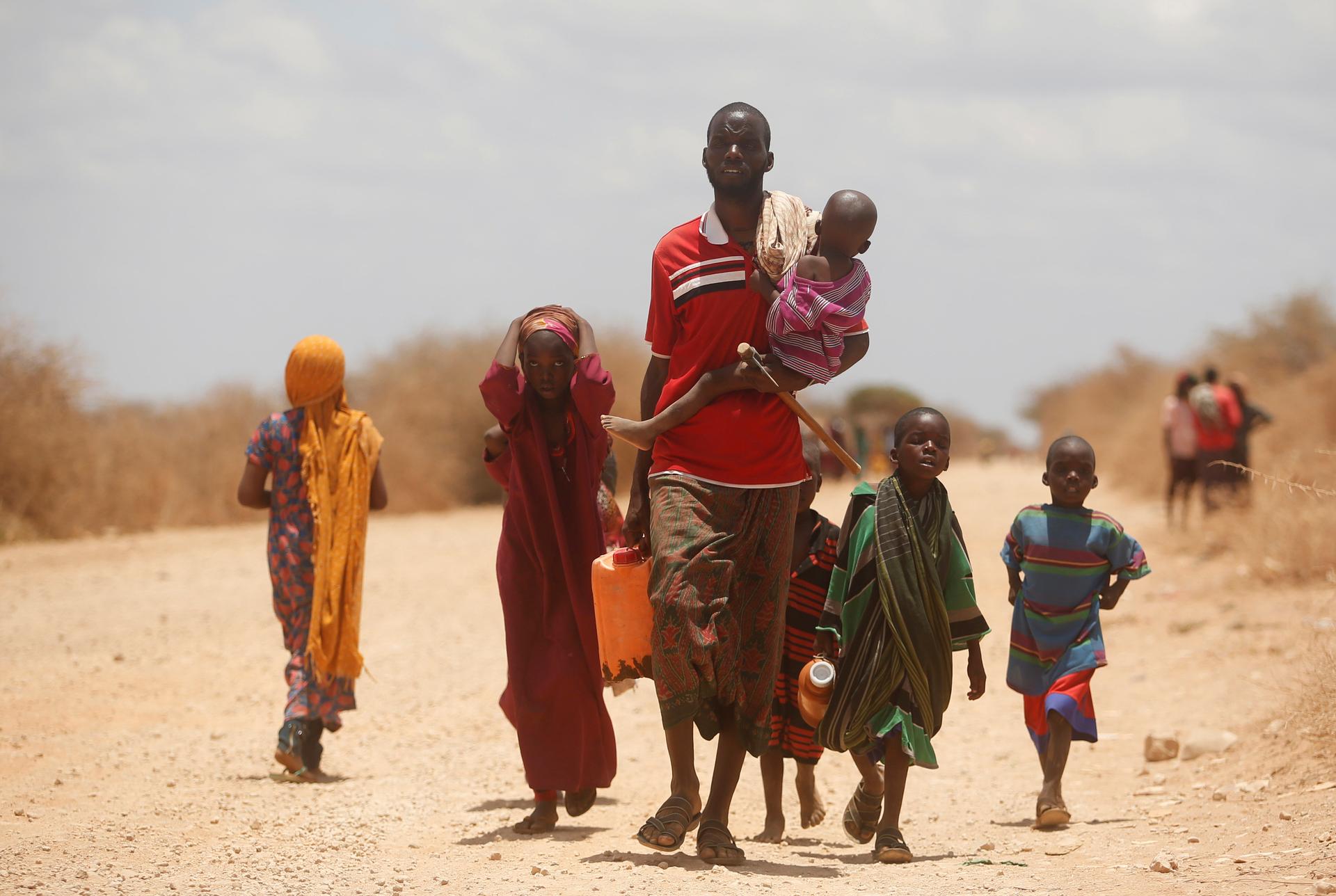
Somalia has been here before.
The East African country experienced a major famine in 2011 that claimed 250,000 lives, including 130,000 children under 5 years old. The government hasn’t released the death toll from the current crisis, citing security concerns.
With the drought intensifying and spring rains set to fail once again, the tragedy of 2011 could repeat itself without a massive international effort.
“We have a small window to stop what happened in 2011 from happening again, but that window is quickly shutting,” warned Hassan Saadi Noor, country director for Save the Children Somalia.
For many Somalis, the window has already closed.
Two out of four of Sahra Ahmed’s children are dead. The 33-year-old mother has been struggling against violence, drought and soaring prices for food and water to keep her two remaining children alive.
She lost her other two children to starvation in February while trying to find her way by foot to the Dadaab refugee camp in the northern Kenya. Her youngest child is now malnourished.
“Being born in Somalia is like a curse,” she said. “Now look at my children how they are malnourished. They can die anytime from now because they have not [been] eating anything. Life is very hard in Somalia.”
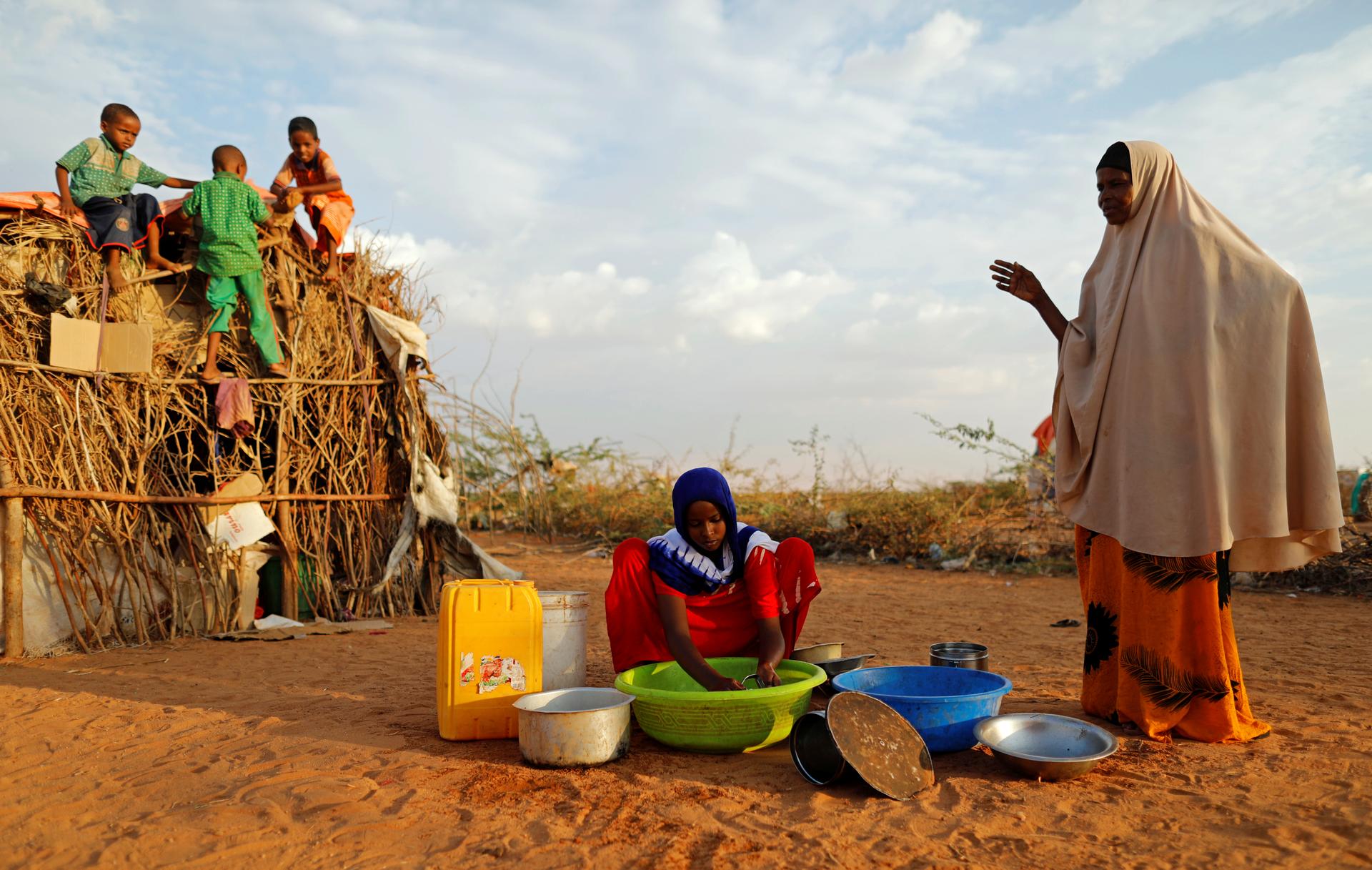
Somalia’s drought may be devastating, but much of the suffering is man-made.
While Somali forces have curtailed the reach of the al-Qaeda-affiliated terrorist group Al-Shabab, the militants continue to carry out attacks in Mogadishu and still control swaths of the Somali countryside. And that means they control food and access.
“I have not been receiving food aid from anybody,” Ahmed said of the conditions back home. “Accessing food aid is a problem because al-Shabab always block roads used by vehicles transporting the aid. They steal food and kill occupants.”
Al-Shabab claims to be distributing aid to Somalis living under its control. Meanwhile, aid agencies say militants are denying them access to those areas. Earlier this month, al-Shabab kidnapped four aid workers employed by the World Health Organization.
Earlier this month, Mohamed gave al-Shabab militants 60 days to surrender in exchange for amnesty, education, training and employment. On April 9, the group carried out a suicide attack at a government building in the Mogadishu that killed seven people. The following day, another bombing killed a municipal worker in the city.
"Terror attacks have become frequent and all Somali forces were on the state of alertness to combat insecurity and terror," said Mohamed in response to the April 9 incident.
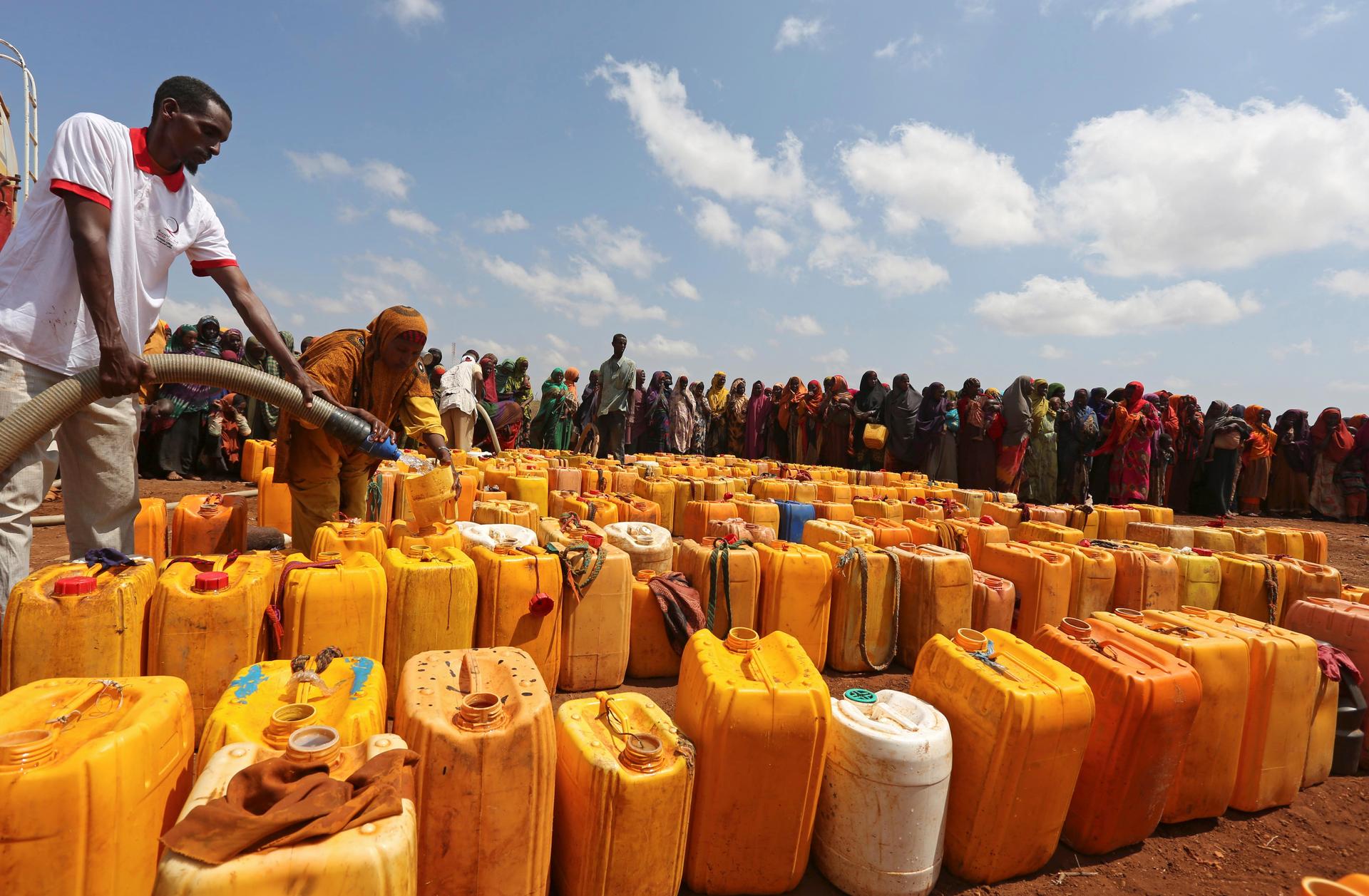
Late last month, UNICEF Executive Director Anthony Lake said the fight against terror had diverted resources from the fight against famine.
“Time is running out for more than a million children — we can still save many lives,” Lake said. “The severe malnutrition and looming famine are largely man-made. Our common humanity demands faster action. We must not repeat the tragedy of the 2011 famine in the Horn of Africa.”
For now, young Abubakar’s future remains uncertain.
“I can’t go to school because I am hungry,” he said. “I will walk until I get to a place where food is distributed.”
Tonny Onyulo reported from Nairobi, Kenya.
Every day, reporters and producers at The World are hard at work bringing you human-centered news from across the globe. But we can’t do it without you. We need your support to ensure we can continue this work for another year.
Make a gift today, and you’ll help us unlock a matching gift of $67,000!
